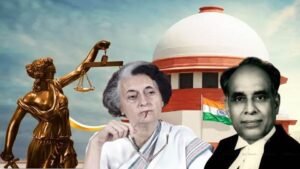
National Mission for Clean Ganga
The National Mission for Clean Ganga (NMCG), an institution established to execute the Government of India’s Namami Gange Programme, has now been formally recognized as an “authority” under the Income Tax Act. This change comes through a notification from the Central Board of Direct Taxes (CBDT), exempting the NMCG from paying income tax and bringing relief from tax demands totaling over ₹243 crore.
This move is not just an administrative relief but a crucial development under environmental law, income tax law, and public policy governance — all areas highly relevant for CLAT aspirants.
Understanding this move helps in building solid foundations in topics such as:
- Statutory interpretation
- Taxation law
- Environmental governance
- Centre-state administrative mechanisms
This summary is presented by CLAT Gurukul, India’s best online coaching for CLAT, where students get access to legal current affairs, expert mentorship, and mock practice for law entrance exams. Join our platform for updated insights into legal developments that matter.
Why in News?
- The Central Board of Direct Taxes (CBDT) has notified that National Mission for Clean Ganga (NMCG) will now be treated as an “authority” under clause 46A of section 10 of the Income Tax Act, 1961.
- This grants it full exemption from income tax with retrospective effect from Assessment Year 2021-22 to 2024-25, and prospectively from 2024-25 onwards.
- The NMCG was earlier facing income tax demands of ₹243.74 crore, which are now effectively waived.
- This move allows the NMCG to focus on its environmental mission without the burden of litigation and tax liabilities.
Key Highlights and Summary Points
- What is NMCG?
- It is the implementing body for the Namami Gange Programme, launched by the Government of India to clean and rejuvenate the River Ganga.
- It functions under the Ministry of Jal Shakti.
- Recent Development:
- The CBDT has notified NMCG as an “authority” under clause (46A) of Section 10 of the Income Tax Act, 1961.
- This means NMCG’s income is now exempt from tax, provided it continues to operate under the purposes mentioned in the notification.
- Legal Provision Involved:
- Clause 46A, Section 10, Income Tax Act, 1961: Grants income tax exemption to any body, board, trust, authority, or commission established under a Central or State Act, if it serves specific public purposes.
- Why was Tax Relief Needed?
- NMCG had been earlier classified as an Association of Persons (AOP) and taxed heavily due to its high income.
- It was facing demands of ₹243.74 crore in taxes from previous years, due to which it sought legal and administrative relief.
- Retrospective and Prospective Relief:
- Relief is applicable for four assessment years: 2021-22, 2022-23, 2023-24, and 2024-25.
- This was made effective by a notification dated April 22, 2024.
- How Did It Happen?
- After being denied relief in assessments, NMCG’s application was supported by Jal Shakti Ministry, which coordinated with the Ministry of Finance and the CBDT.
- It was recognized that NMCG is a statutory body under the Environment (Protection) Act, 1986, and hence, eligible for exemption.
- Impact of the Notification:
- Brings significant financial relief to the NMCG.
- Empowers officials to concentrate fully on their core mandate of cleaning Ganga without litigation distractions.
- Clarifies the legal status of NMCG for future purposes.
Legal Provisions and Constitutional Connection
- Income Tax Act, 1961:
- Section 10(46A): Provides tax exemption to notified bodies set up under Central/State laws.
- Ensures that public sector bodies do not face taxation on grants or income used for public welfare purposes.
- Environment (Protection) Act, 1986:
- NMCG is constituted under this Act.
- Enables the Central Government to take all necessary measures for the protection and improvement of the environment.
- Role of CBDT:
- Under the Ministry of Finance, CBDT is empowered to issue such notifications in public interest.
Notes on Technical Terms
- Authority under Clause 46A: A government-constituted body that serves public purposes and is exempted from tax as per Income Tax provisions.
- Assessment Year: The financial year in which income earned in the previous year is assessed for tax.
- Association of Persons (AOP): A tax classification for a group of individuals or entities. NMCG was earlier treated as AOP, which led to high tax liability.
- Retrospective Effect: A law or notification that applies to past events or actions as if it was always in force.
- Namami Gange Mission: Flagship programme of the Government of India aimed at conservation and rejuvenation of the Ganga River.
Significance for CLAT Aspirants
This development intersects constitutional law, environmental law, and tax law — all important parts of the CLAT syllabus. Questions may be framed on:
- The meaning and application of Section 10(46A).
- Differences between a statutory body and an association of persons.
- Relevance of retrospective taxation.
- Role of CBDT and administrative law principles.
Such case-based updates are frequently asked in CLAT UG and PG exams under the Legal Reasoning or Current Affairs with Legal Relevance sections.
Message from CLAT Gurukul
At CLAT Gurukul, the best online coaching for CLAT, we provide not just exam preparation but legal awareness through such case studies. Our expert faculty integrates real-time legal developments into classes to sharpen your conceptual clarity and answer-writing skills.
Why Choose CLAT Gurukul?
- Online Coaching for CLAT with Daily Current Legal News
- Live Mentorship by Top Legal Educators
- Mock Tests, Topic-wise Practice, & Performance Tracking
- Special Classes on Legal Current Affairs & Case Laws
If you are looking for the best coaching classes for CLAT that cover both static and dynamic content, then CLAT Gurukul is your ideal learning partner.
Conclusion
The recognition of NMCG as an authority under the Income Tax Act is not just a bureaucratic step but a pivotal legal event. It emphasizes the importance of proper classification under the law, the collaborative functioning of government ministries, and the protective umbrella that law can offer to statutory bodies serving public interests.
For CLAT aspirants, this case offers a valuable legal precedent to understand how tax law interacts with public policy and environmental governance. Stay updated with such developments only at CLAT Gurukul – India’s Most Trusted Platform for Law Entrance Exams.
Note
- This Blog is Powered by CLAT Gurukul — India’s Premier Law Entrance Coaching Platform
At CLAT Gurukul, we are dedicated to nurturing the next generation of legal professionals through a powerful blend of expert mentorship, strategic preparation, and high-quality content. This blog reflects our commitment to offering aspirants not just updates — but understanding, not just information — but insight.
Why Choose CLAT Gurukul?
- Personalized Guidance from Top Legal Mentors
- Comprehensive Study Resources & Legal Updates
- Daily Practice Sets, Mock Tests & Progress Analysis
- Result-Oriented Preparation Strategy for CLAT, AILET & CUET
Whether you’re here to sharpen your current affairs, brush up legal reasoning, or boost your comprehension skills — you’re already one step ahead with CLAT Gurukul.
Join the success stories of thousands of toppers who trusted us and cracked India’s toughest law entrance exams.
Visit www.clatgurukul.in to explore our full offerings or speak directly to our expert team.
- A Note from Team CLAT Gurukul
We at CLAT Gurukul are committed to providing free, high-quality CLAT study material to support all serious aspirants, regardless of background.
Our content includes:
- CLAT Current Affairs
- Legal Reasoning Practice Passages
- Static & Dynamic General Knowledge
- Logical Reasoning Exercises
- English Comprehension Practice Sets
All our material is curated by experienced mentors and regularly updated to reflect the latest CLAT UG pattern.
Open-access learning is our core philosophy. We believe that every student deserves the right guidance — and we aim to deliver that, free and consistently.
Explore our blog by topics like:
Best Online Coaching for CLAT
CLAT Legal Reasoning & Updates
CLAT GK & Current Affairs
CLAT Logical Reasoning Practice
CLAT English Section Preparation
For complete access to structured courses, expert mentorship, and test prep tools, visit www.clatgurukul.in — The Best CLAT Coaching in Patna and India’s Trusted Online CLAT Prep Platform.
- For CLAT Legal Reasoning Blog Readers:
Looking to master legal reasoning for CLAT 2026? Our blog posts include:
- Legal reasoning practice questions based on case laws
- Constitution and statute-based passages
- Detailed explanations and logical application tips
All content is crafted in alignment with the official CLAT syllabus, incorporating recent Supreme Court judgments, amendments, and relevant legal updates.
Explore topics under:
CLAT Legal Reasoning PDFs
Case-Based Legal Questions
CLAT Legal News Capsules
Best Online Coaching for CLAT
📲 For access to full-length mocks, live classes, and personalized mentoring, visit www.clatgurukul.in — India’s Top-Rated CLAT Online Coaching Platform.
- For CLAT Current Affairs & GK Blog Readers:
Stay up to date with daily and monthly CLAT GK capsules, including:
- National & International Current Affairs
- Legal and Policy Updates
- Economic, Environmental & International News
- Static GK & Constitution-based Facts
Our monthly compilations and legal GK explainers are crafted to boost your retention and CLAT-specific knowledge.
Explore categories like:
CLAT Current Affairs 2025–26
Legal GK & Landmark Amendments
Free CLAT GK PDFs & Notes
Toppers trust www.clatgurukul.in for CLAT-specific General Knowledge preparation. Join them and take the next step toward your law career.
- For CLAT Logical Reasoning Blog Readers:
Master the Logical Reasoning section with our expertly curated content:
- Argument & Assumption Based Practice Sets
- Inference, Strengthening/Weakening & Conclusion Questions
- CR Passages Based on the CLAT Pattern
Improve your analytical thinking, comprehension speed, and exam accuracy.
Popular blog categories include:
CLAT Logical Reasoning
Statement-Conclusion Drills
Critical Reasoning for CLAT 2026
Free Reasoning PDFs & Questions
For targeted mentorship, structured practice, and expert strategy — log on to www.clatgurukul.in, India’s Most Trusted CLAT Online Coaching Platform.
Ready to elevate your CLAT prep?
Visit 👉 www.clatgurukul.in — or WhatsApp us at 📲 +91-7033006444 to speak to our academic advisors.






